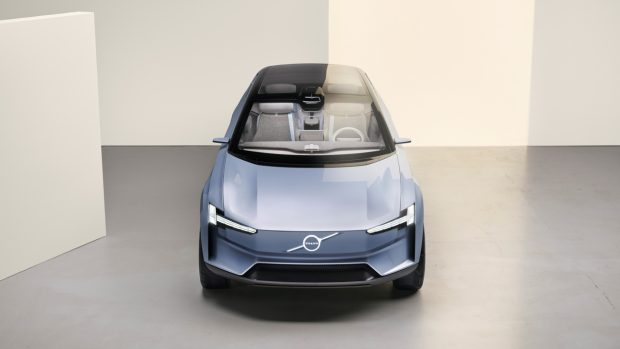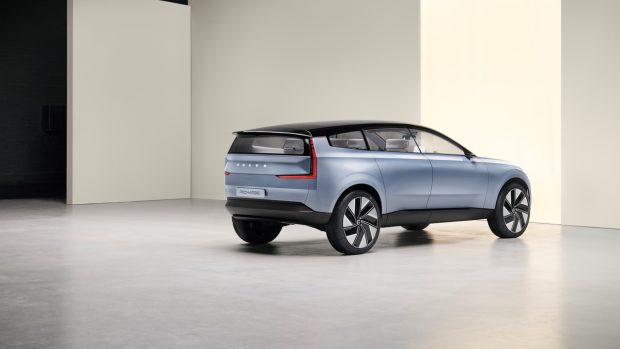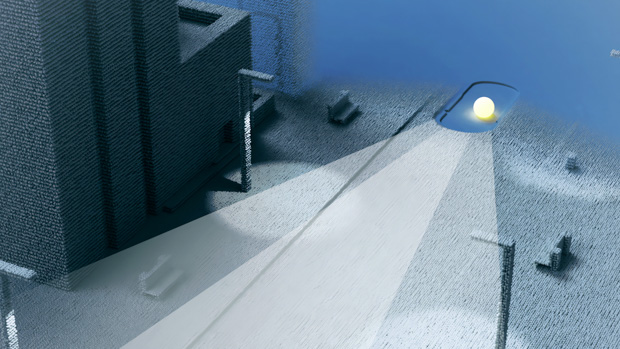-
Car Reviews
- Car News
-
Car Comparisons
Latest comparisons
- Chasing Deals
In classic Volvo style, the new model will be all about safety, debuting a new ‘driver understanding system’ and LIDAR as standard
Swedish carmaker Volvo has confirmed that it will reveal a new three-row, seven-seat SUV on November 9 – and the fully-electric model now has a name: the EX90.
Volvo says that this new electric SUV will debut safety technologies that further aids the interaction between driver and vehicle and ensures driving safety, replete with a prominent, roof-mounted LIDAR sensor.
The new Volvo EX90 will debut to the public on November 9 and will likely compete with other future electric SUVs such as the Mercedes-Benz EQS SUV, the BMW iX, and the forthcoming electric version of the Range Rover.
The release of an electric replacement or supplement to the current XC90 moves Volvo one step closer to its commitment to make its entire model range fully electric by 2030.
Chasing Cars reported recently that the new EX90 could be a heavy facelift of the existing XC90 that sits on the current SPA platform. Patent images suggest that this could be very likely as the patent model is very similar in proportions to the current XC90 SUV.
However, the new EX90 could sit on a new SPA2 platform under the codename ‘Embla’ that will offer three rows of seating and will be physically larger than the current XC90.
The EX90’s electric powertrain is still under wraps, however the current 300kW/660Nm dual-motor, high-power setup from Volvo XC40 Recharge Pure Electric could be used for the new flagship Volvo product.
It is also possible that a lower-end, single-motor configuration could be available to power the rear wheels, returning Volvo to its pre-1990s roots.
However, on the electric XC40 model, the single-motor version powers the front wheels, as two-wheel drive Volvos have been configured since the launch of the midsize 850 range in 1992.
Volvo’s new driver awareness software uses two interior cameras that can indicate when the driver might not be in their regular state and measures the eye-gaze patterns of the person.
The system looks for any signs of cognitive distraction where the driver might be looking at their phone, thinking about something other than the road or if their eyes are closed when tired.
The Volvo’s steering is also capacitive in that it can sense when the driver takes their hands off the wheel.
Therefore, the EX90 will be able to take appropriate action based on real-time feedback from the interior sensors, from warning chimes that grow in severity to the vehicle autonomously and safely pulling to the side of the road with its hazard lights on if the driver is unconscious.
Volvo says that with the new LIDAR software it has developed, there could be a 20 percent decrease in severe accidents.
The new EX90 will have LIDAR sensors on board, with Volvo saying that it will offer “one of the most advanced sensor sets on the market”.
The driving sensors on the new vehicle include eight cameras, five radars, 16 ultrasonic sensors and a new LIDAR sensor.
What is lidar and how does it work?
LIDAR stands for light detection and ranging and works by using a pulsed laser to measure the range between the vehicle and incoming objects.
Unlike radar-systems and cameras of the past, LIDAR is steps above as it can operate successfully even in low-light or low-visibility conditions such as in the pitch dark or in foggy climates.
Volvo claims that their LIDAR system can detect pedestrians at up to a range of 250 metres and can also see something as dark and small as a tyre on a black road 120 metres ahead.
Head of safe vehicle automation at Volvo Cars, Joachim de Verdier, said that “we believe the EX90 to be the safest Volvo car to ever hit the road.
“When all our safety systems come together, they create a preventative shield of safety around you … you won’t even know it’s there until you need it”.
The LIDAR system, along with other new safety technologies, will be first introduced on the new EX90, but is likely to be found on future Volvo products.
Latest news
About Chasing cars
Chasing Cars reviews are 100% independent.
Because we are powered by Budget Direct Insurance, we don’t receive advertising or sales revenue from car manufacturers.
We’re truly independent – giving you Australia’s best car reviews.



